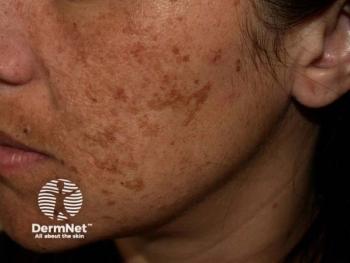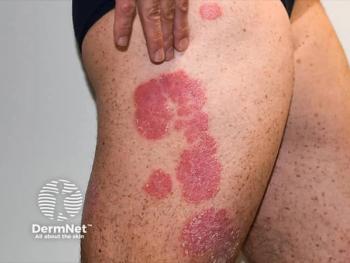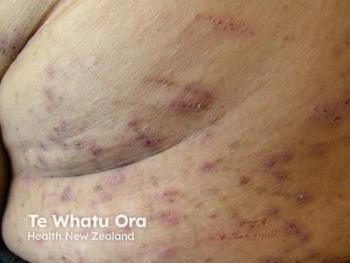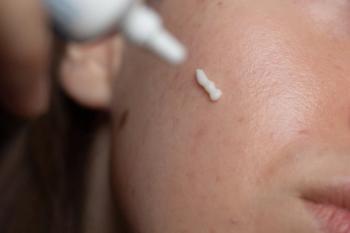
Rethinking “Monotherapy Brain” in Complex Skin Disease
At the DERM 2025 conference, Scott Boswell, MD, shares tips for combining therapies.
Clinicians treating patients with moderate to severe inflammatory skin conditions should consider moving beyond “monotherapy brain” and embrace evolving combination strategies
Boswell said it can be easy to fall into a “this or that” approach, but that may not be sufficient for patients with moderate to severe disease. “Sometimes we need to combine and have them stay on their current therapy, but add another systemic agent that addresses the cytokines, the pathophysiology that’s actually going on in their skin,” Boswell told Dermatology Times. By understanding the pathophysiology, clinicians can carefully choose strategies to improve patient outcomes, he said.
In the session, Boswell shared his top clinical pearls.
1. Use methotrexate with tumor necrosis factor (TNF) inhibitors to avoid neutralizing antibody formation. As an added bonus, Boswell shared a tip for addressing insurance company concerns when pursuing a biologic for psoriasis. He explains to them that the methotrexate reduces COVID vaccine efficacy and puts the patient at risk for COVID.
2. Consider combining psoriasis and atopic dermatitis biologics. But he reminded attendees it probably is not a good idea to double hit the same pathway. For example, a biologic for psoriasis is immunosuppressive but biologics for atopic dermatitis (IL-4, IL-13, IL-31 inhibitors) are not immunosuppressive, so they can be combined.
3. Don’t forget the cream—if the patient is flaring on a systemic agent, consider adjusting topical therapy. He reminded attendees of the new non-steroid topicals (for psoriasis: tapinarof and roflumilast (off label: pimecrolimus and tacrolimus) and for atopic dermatitis: tapinarof, roflumilast, ruxolitinib, pimecrolimus, tacrolimus, and crisaborole).
4. Narrowband Ultraviolet B (NBUVB) phototherapy or intralesional TAC ILK (intralesional triamcinolone acetonide injections) can be added if the patient is flaring on a systemic. ILK in stubborn areas can help stay the course, he said.
5. Feed 2 birds and use the monotherapy brain when inflammatory bowel disease (IBD) is comorbid with psoriasis. Boswell said the TNF inhibitor infliximab can be effective for both conditions. However, if psoriasis was induced by the TNF-inhibitor prescribed for IBD and either condition is worsening, he suggested an IL12/23 (ustekinumab) or IL23 (guselkumab or risankizumab) agent and conferring with the gastroenterologist.
6. For bullous pemphigoid, initiate dupilumab with prednisone on the first visit. Remember to perform biopsies and serologies and remember you will need to taper them off steroids.
7. For atopic dermatitis, consider combining biologics with JAK inhibitors (or other biologics). Boswell shared a number of concerns and considerations, including patients who present on these medications for a separate medical issue, especially as the indications increase. More research is needed, he added.
Ultimately, finding what is right for each patient is essential. Be patient with the process and consider options, Boswell told Dermatology Times. “Not each patient is the same,” he said. “It's just a reminder that we treat patients, not diseases.”
“It's really about setting that expectation of garnering and listening to the patient about what their expectation is with their skin disease,” he added. “And always do what's right for the patient.”
Reference
1. Boswell JS. Combining Systemic Treatment in AD, Psoriasis and More: 8 Pearls to Ride the Tide. Presented at the 2025 DERM NP/PA CME Conference; July 23-26, 2025; Las Vegas, Nevada.
Newsletter
Like what you’re reading? Subscribe to Dermatology Times for weekly updates on therapies, innovations, and real-world practice tips.


















